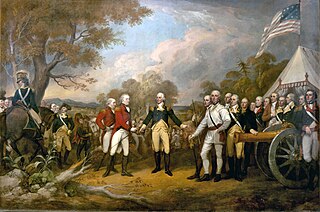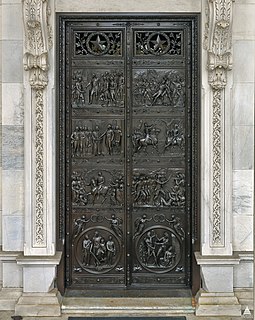
1779 (MDCCLXXIX) was a common year starting on Friday of the Gregorian calendar and a common year starting on Tuesday of the Julian calendar, the 1779th year of the Common Era (CE) and Anno Domini (AD) designations, the 779th year of the 2nd millennium, the 79th year of the 18th century, and the 10th and last year of the 1770s decade. As of the start of 1779, the Gregorian calendar was 11 days ahead of the Julian calendar, which remained in localized use until 1923.

1780 (MDCCLXXX) was a leap year starting on Saturday of the Gregorian calendar and a leap year starting on Wednesday of the Julian calendar, the 1780th year of the Common Era (CE) and Anno Domini (AD) designations, the 780th year of the 2nd millennium, the 80th year of the 18th century, and the 1st year of the 1780s decade. As of the start of 1780, the Gregorian calendar was 11 days ahead of the Julian calendar, which remained in localized use until 1923.
John, Johnny, or Jock Simpson may refer to:
William Mason may refer to:
William Maxwell may refer to:

David Whitfield was a popular British male tenor vocalist from Hull. He became the first British artist to have a UK No.1 single in the UK and in the United States with "Cara Mia", featuring Mantovani and his orchestra. He died from a brain haemorrhage in Sydney, Australia, while on tour at the age of 54.
William Day may refer to:
William Howe may refer to:
William Jackson may refer to:
William, Bill or Billy Byrne may refer to:

The Surrender of General Burgoyne is an oil painting by John Trumbull. The painting was completed in 1821, and hangs in the rotunda of the United States Capitol in Washington, D. C.

The Revolutionary War Door is an artwork by American sculptor Thomas Crawford, located on the United States Capitol House of Representatives wing east front in Washington, D.C., United States. This sculptured door was surveyed in 1993 as part of the Smithsonian's Save Outdoor Sculpture! program.
Biddle is a surname. Notable people with the surname include:
William Whitfield II was a Captain of the 6th Virginia Regiment during the American Revolutionary War and a planter. He purchased Seven Springs, North Carolina from Buckskin Williams, the father of Benjamin Williams, the Governor of North Carolina.
Sir William Whitfield was a British architect and town planner.
William Whitfield III was a soldier and slave owner. The son of William Whitfield II, he fought in the Battle of Moore's Creek Bridge during the American Revolutionary War.
The Whitfield family was a prominent American political family of the Southern states. The Whitfields formed the American branch of the British Whitfield family - having descended from the British aristocracy, particularly the Earls of Kilmorey and having established colonial residency under Sir. Thomas Whitfield, whom headed East India Trading for the British Empire. In early days of Colonial America, the family emigrated to Virginia in the seventeenth century, particularly, Nansemond County, Virginia from Lancashire, England.

The George Washington and the Revolutionary War Door (1855–1868) is pair of a bronze sculptured doors to the Senate wing of the United States Capitol in Washington, D.C., United States. American sculptor Thomas Crawford designed and modeled the doors in the mid-1850s, but died prior to their completion. American sculptor William H. Rinehart completed the doors based on Crawford's designs.
This page is based on this
Wikipedia article Text is available under the
CC BY-SA 4.0 license; additional terms may apply.
Images, videos and audio are available under their respective licenses.





